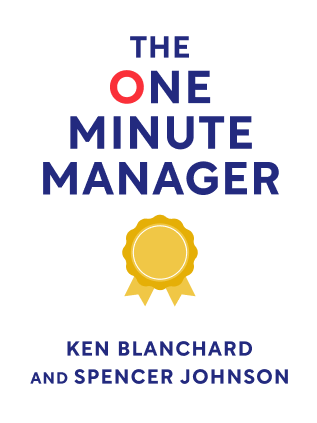

This article is an excerpt from the Shortform book guide to "The One-Minute Manager" by Ken Blanchard and Spencer Johnson. Shortform has the world's best summaries and analyses of books you should be reading.
Like this article? Sign up for a free trial here .
What are one-minute praisings? How do you give a one-minute praising? What are the benefits of giving immediate feedback?
In the book The New One-Minute Manager, a one-minute praising is when you provide immediate, detailed, and personal feedback to your employees. Most managers focus on reprimanding employees when they make mistakes but not enough managers look for things to praise.
This is why you should focus on what you’re employees do well rather than on their mistakes.
Ken Blanchard on One-Minute Praisings
Once they’ve set goals, one-minute managers use one-minute praisings to motivate their employees. One-minute praisings are quick bursts of positive affirmation delivered by the manager to the employee when the employee has done something that helps the organization.
In many organizations, people are only given feedback when they’re doing something wrong. This is demotivating and puts employees on edge. Consistently and immediately praising people for their work lets people know how they’re doing and encourages them to work even harder to earn even more praise.
Preparing for One-Minute Praisings
Before you get started with one-minute praisings, you need to do a few things beforehand.
1. Tell your employees right up front that you’ll be giving them immediate feedback. This sets the expectation right out of the gate and eliminates and chance of them being surprised or caught off-guard. You want them to internalize your praise: they might not do this if they’re caught off-guard.
2. Have your employees keep careful records of all their progress toward their goals and make sure they share that progress with you on a regular basis. You want to catch them doing something right. This is what truly sets the stage for one-minute praisings. Contrast this to what what so many ineffective managers do: scanning through their employees’ results looking for something that they’ve done wrong, so they can reprimand them.
Giving One-Minute Praisings
Each one-minute praising follows a specific sequence of steps. Complete the sequence, and you’ll give a complete praising that’s meaningful and specific.
Connect It To a One-Minute Goal
Employees need to know that they are being evaluated based on how they’ve delivered on the one-minute goals they created with you. This makes the praising specific and actionable. The employee will know they’re on the right track and will keep working hard on their goals because they’ve been motivated by your praise praise.
Be Specific
Tell your employee precisely what they did right.
Don’t give generic compliments like, “You’re doing a great job.” An employee won’t know what they did specifically and won’t learn anything from a praising like that.
Instead, be specific and pointed. Example: “Excellent work on that Q3 sales projections presentation! Your research was thorough, you answered all the questions confidently, and you’ve improved your speaking voice.” Specificity like this shows them that you’re paying attention to their work product.
Share Your Feelings
Tell the employee how good it makes you as the manager feel and how it helps the organization.
People want to know that their individual efforts are contributing to the achievement of something larger. By connecting their performance with organization performance, you’re letting them know that their work is valuable (and valued).
Example: “That presentation made me really happy and proud to have you on our team. I hired you because I saw you had potential, and I can clearly see that you’re living up to it.”
Pause and Let the Employee Reflect
Let the employee savor the moment: pause, let them speak, let them feel good.
Build on the Momentum
Then, set a new benchmark for the future by encouraging them to continue and build upon their good work. This is key, since you’ll be delivering less and less praise each time an employee does the same thing right. Thus, you need to encourage them to achieve new heights.
Lastly, show that you’re invested in them by expressing confidence in them and sharing that you support their success and goals by saying something like, “You’re on the right track here and I’m going to do everything in my power to make sure you keep on succeeding. Keep it up!”
Principles for Effectiveness
Be timely: give one-minute praisings immediately after you’ve caught the employee doing something right. This effectively establishes the connection between the good behavior and the positive reinforcement you’re giving them. If it’s delayed, it’ll be harder for the employee to connect the dots.
Be consistent: give praise when it’s deserved, even when other areas of the company aren’t doing well. It’s not fair (and very demotivating to hardworking employees) to withhold deserved praise from individuals because of factors beyond their control. Apply this at the individual level too: praise people when they do something right, even if they simultaneously messed something up in another area of their job.
Praise generously with new hires. These employees should get positive feedback even when they only get something approximately right. Then as they make progress, only give a one-minute praise when they get it exactly right.
For example, when a child is first learning to speak, you praise them for making any vocalization at all. Then, you only praise them when they make approximations of words, like “wah-wah” instead of water. Finally, you only praise them when they correctly say “water.” The standards of performance are lower for someone who is just learning than they are for someone who’s further along.
Eventually, your one-minute praisings will become less and less frequent. As your employees develop and grow, they’ll become motivated to catch themselves doing something right. They become champions and ambassadors of their own success, coming to you with their positive results to request their own one-minute praisings.
Why One-Minute Praisings Work
Why are one-minute praisings an effective and motivating management tool?
Praisings are Immediate
One-minute praisings efficiently communicate to your employees how they’re doing. They don’t need to wait for an annual performance review to hear from you. This allows for performance improvement to happen immediately and be a continuous process. They’ll know right away when they’re doing the correct thing, so they’ll know to keep on doing it. This is especially helpful with new goals and new employees, who might not yet know what constitutes success in your organization.
Praisings are Motivating
Your employees won’t feel you only talk to them when they’re doing something wrong. Their motivation will be positive: they’ll want to top their performance to earn another one-minute praising, rather than just doing the bare minimum to simply avoid being punished.
Praisings Build Confidence for Bigger Goals
Praise for achieving small goals leads to the achievement of bigger goals. People are spurred by previous success. Eventually, you stop praising them for achieving goals that they’ve already reached, and only issue new praise for new accomplishments. The goals get progressively harder, but not so hard that they can’t be reached.
Praisings Avoid the “Leave Alone-Zap”
One-minute praisings help you steer clear of the “leave alone-zap” management style. This latter style is when managers 1) don’t give new hires any direction or guidance on what they’re supposed to be doing, and then 2) zap them with harsh criticism when they make a mistake. The employee learns nothing from this experience, except to do as little as possible, take no risks, and show no ambition, for fear of getting zapped again. They’ll huddle in their proverbial corner become demotivated to do anything, because they don’t even know what caused them to get zapped in the first place.

———End of Preview———
Like what you just read? Read the rest of the world's best book summary and analysis of Ken Blanchard and Spencer Johnson's "The One-Minute Manager" at Shortform .
Here's what you'll find in our full The One-Minute Manager summary :
- How to empower your employees and teach them to succeed
- Why immediate and direct feedback is the most effective
- How to offer constructive criticism to correct behavior






